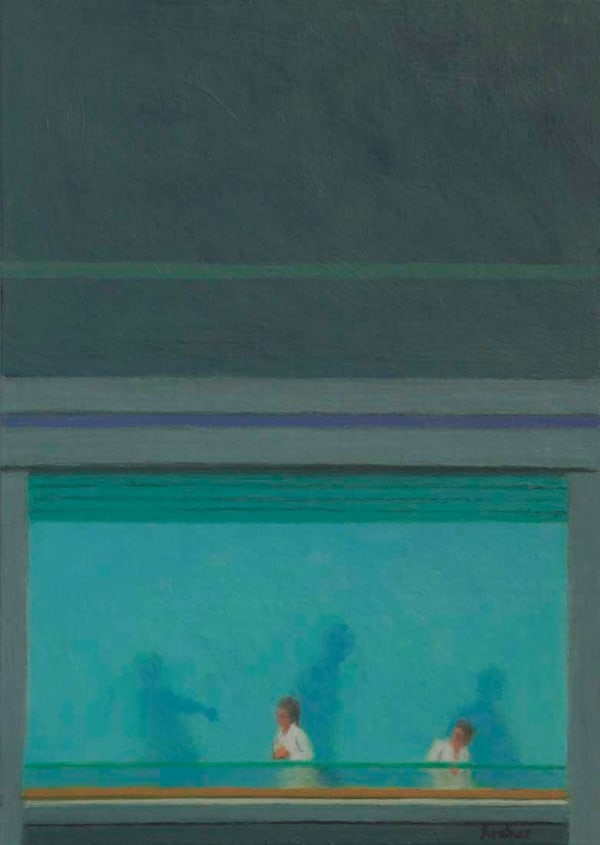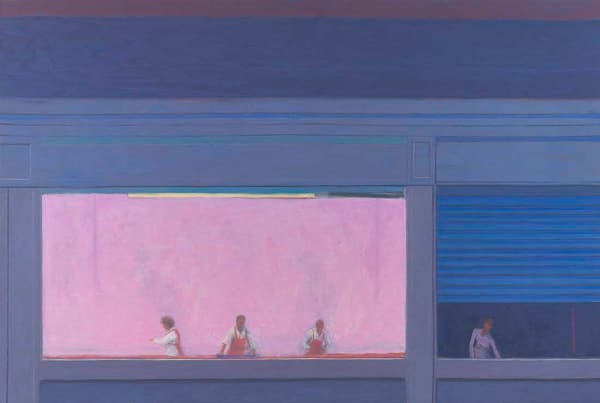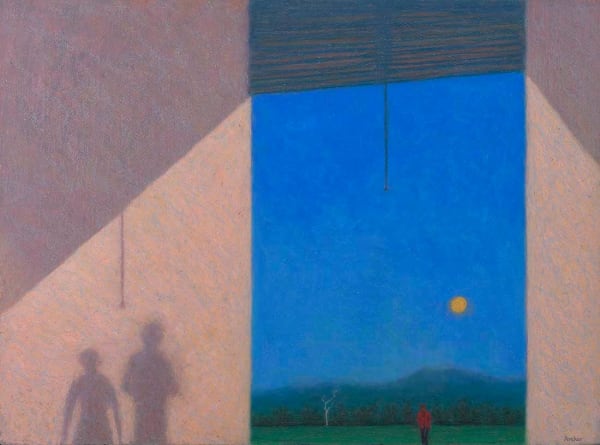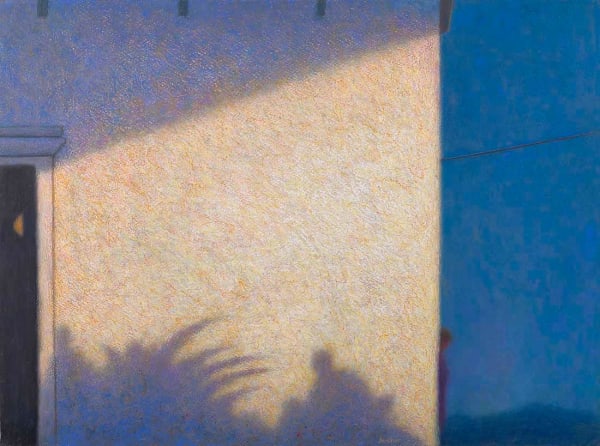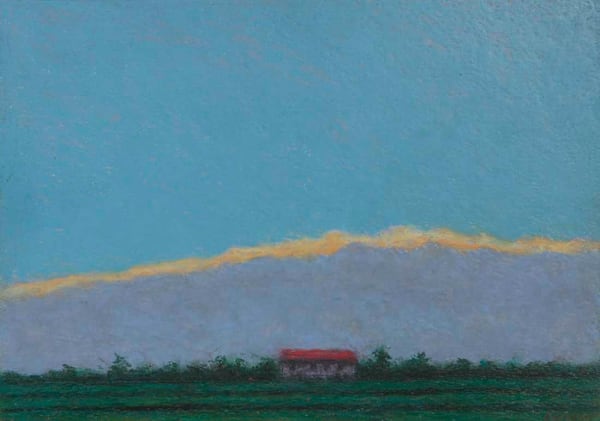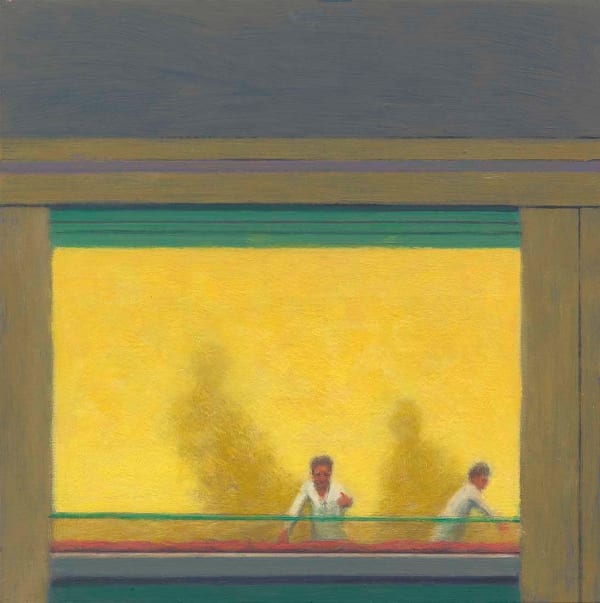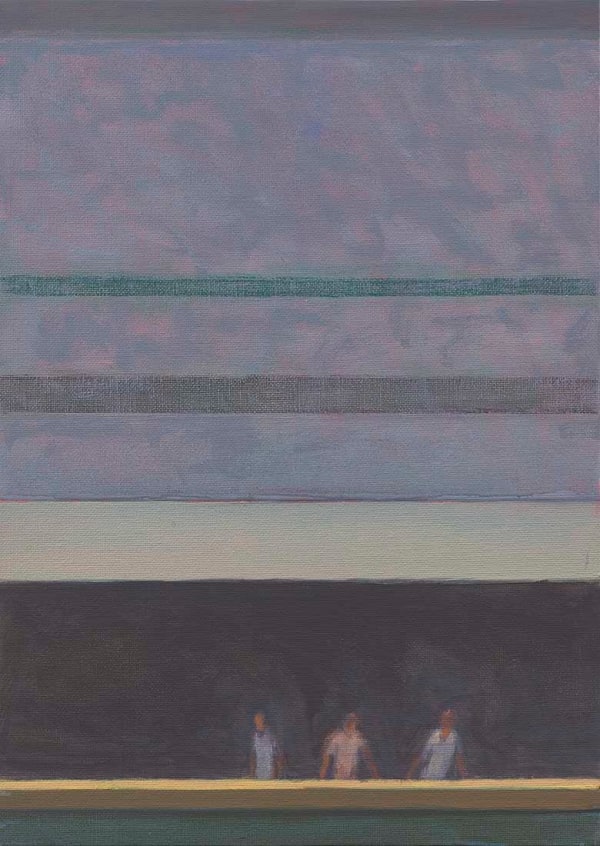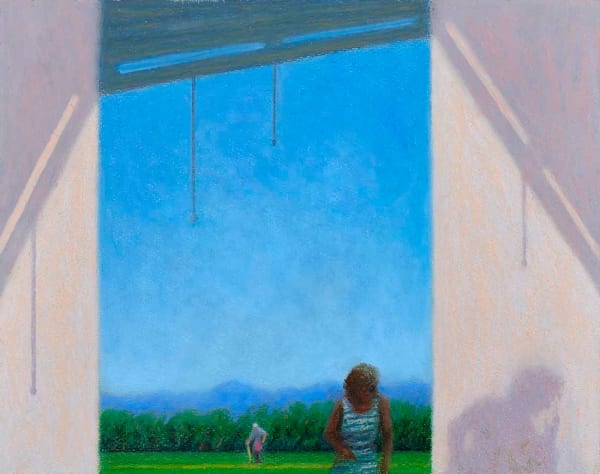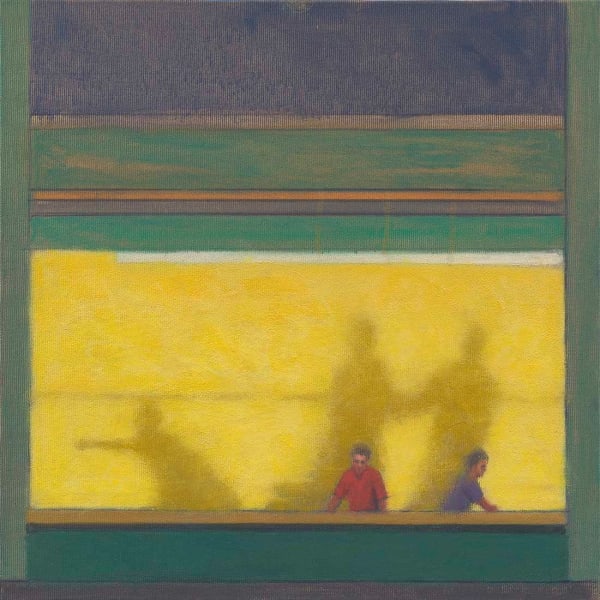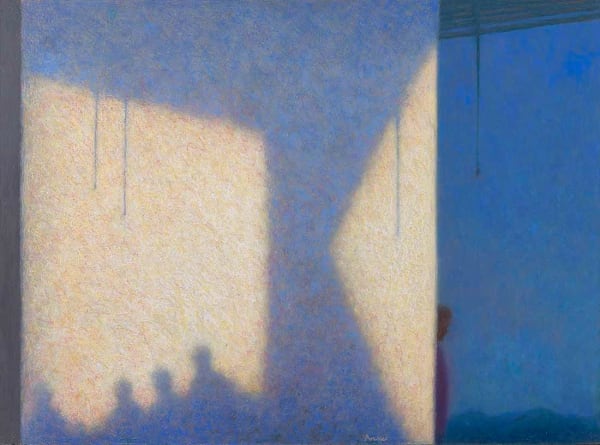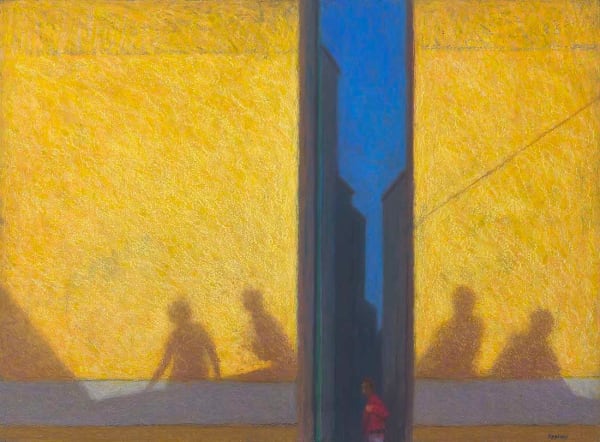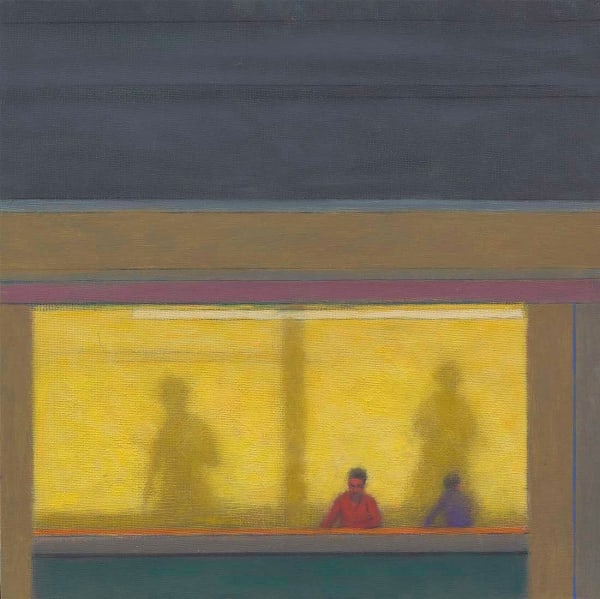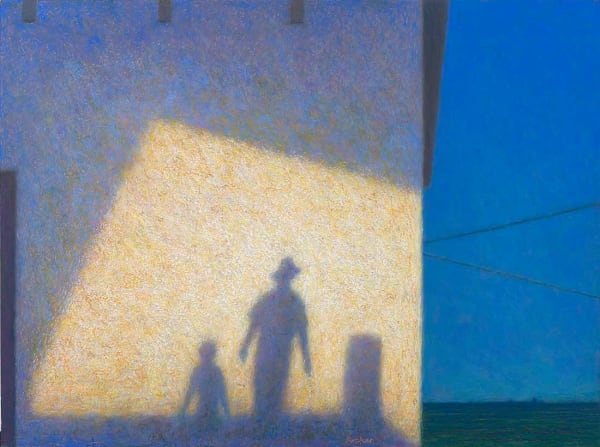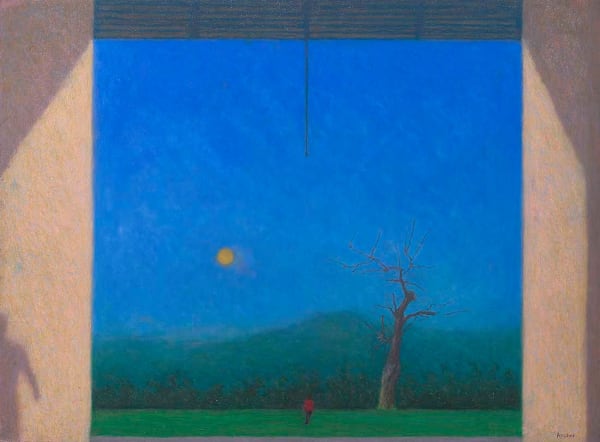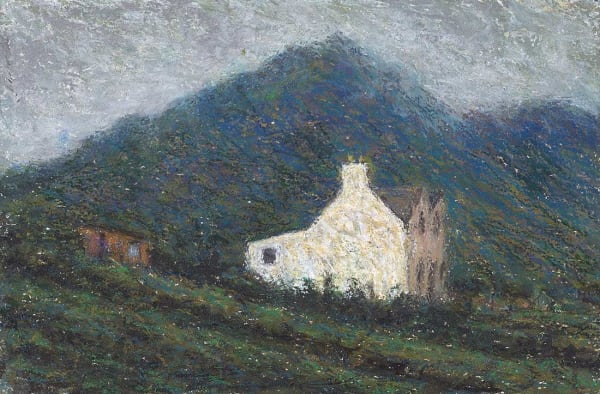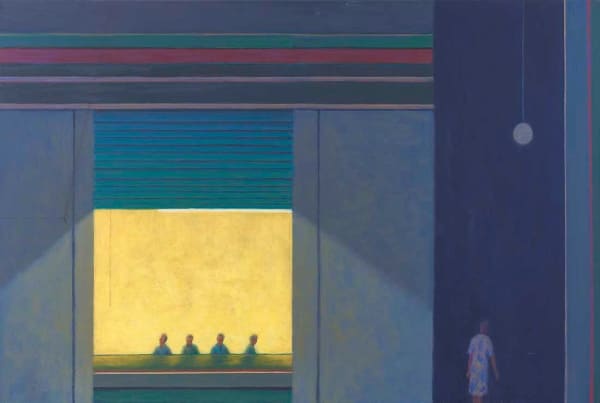Philip Archer OBE : Shadows and Reflections
'Tenebrae' in the western Christian tradition is a candlelit liturgy. Its name suggests darkness, but its mystery and beauty comes from shadows. It's no wonder the old word for a ghost was a shade, from the same root word. At Tenebrae, as the candles are put out one by one, the shadows shift perspective and shimmer, and the room seems to come alive. Tenebrae is nothing if not a drama conducted by shadows.
Philip Archer’s new work is a drama of shadows and feints, reflections and glimpses - in oil paintings inspired by marketplaces and oil pastels rooted in the landscapes of Le Langhe, Piedmont. Both the paintings and the pastel works arise from the artist’s characteristic practice of what Simone Weil called ‘attention’, to people and to places, to shifting patterns of light and shade. His methods are attentive too. The oil paintings emerge from a long, patient process, adding thin layers of paint repeatedly to achieve a fine balance of colour and form. He is a master of oil pastels, a medium invented for Picasso by his art materials supplier in Paris, Sennellier. The pastels distil his subjects into tight, intense forms, often framing the landscapes of Le Langhe with the geometry of a loggia on the borders of inside and outside worlds. In the paintings and the oil pastels, Archer’s dramas of figures and shadows, of people at work or in contemplation, explore the borders of the material and the transcendent.
Much of this exhibition evokes places and events linked with Helen, the artist’s late wife. The artist’s own contemplation of this world and his faith in the reality of the next world are what lights up his work. Whatever the drama of his market scenes and shadow plays, the heart of them all is mystery and beauty. To borrow a line attributed to the American architect Louis Kahn: ‘The sun never knew how wonderful it was until it fell on the wall of a building’
Michael Symmons Roberts, poet



